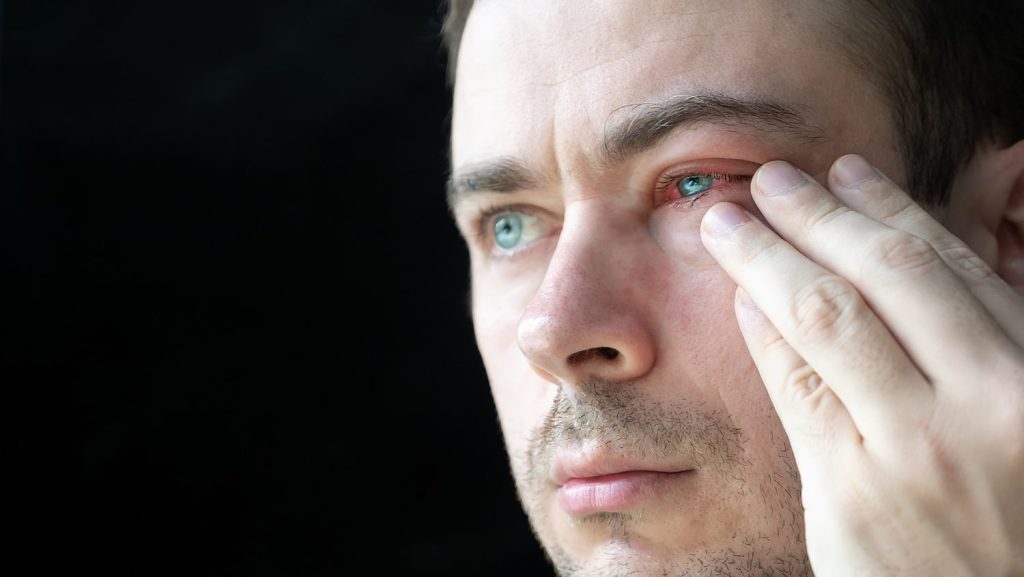
טיפות דמעות – מה זה ולמה משתמשים בהן?
טיפות דמעות הן תמיסות רפואיות או קוסמטיות שמטרתן להקל על
The skin around our eyes is particularly vulnerable to dryness due to its thin and sensitive nature. This area has fewer sebaceous glands than other parts of the body, which reduces the amount of natural oil produced to lubricate the skin. When dry, the skin may crack, peel or become irritated. Dryness around the eyes can also give the appearance of accelerated aging as dryness can cause fine lines and wrinkles to appear more prominent.

The causes of dryness around the eyes can be classified into environmental factors, related to health and lifestyle.
Environmental factors are often beyond our immediate control. For example, harsh weather conditions, such as extreme cold, intense heat, wind and low humidity, can strip the skin of its natural oils and leave it dry. In today's urban world, pollution also contributes significantly to skin dryness. Particulate matter from pollutants may settle on the skin, disrupt its natural pH and damage its protective barrier.
Furthermore, the widespread use of digital devices has introduced a new challenge: digital eye strain. When we focus on screens for extended periods, we blink less frequently, which reduces the eye's natural moisturizing process and contributes to dryness around the eyes.
Health-related factors include conditions such as eczema, psoriasis, or seborrheic dermatitis, which can cause dry, red, and flaky skin around the eyes. Certain systemic conditions such as Sjögren's syndrome, an autoimmune disease, can also cause dry eyes and mouth. Aging is another factor; As we age, milk production naturally decreases, and the skin loses its elasticity and ability to retain moisture.
An incorrect skincare routine or using harsh and inappropriate skincare products can also contribute to dry skin around the eyes. Excessive use of facial cleansers, for example, may disrupt the skin's natural moisture barrier, leading to dryness and irritation.
Identifying dryness around the eyes can be relatively simple. Symptoms vary from mild to severe, depending on the individual and the underlying cause. The most common signs include a feeling of pressure, itching and redness in the area around the eyes. The skin may appear flaky or scaly and fine lines or wrinkles may develop more prominently.
If the condition becomes more severe, the skin may crack, causing discomfort and making the skin feel rough to the touch. Intense itching can lead to scratching, further damage to the skin, resulting in inflammation and swelling.
A dermatologist or ophthalmologist can diagnose the cause of dry skin around the eyes. They usually review your medical history, assess lifestyle factors that may be contributing to the condition, and perform a thorough physical exam.
Prevention and treatment of dryness around the eyes involve multiple strategies:
1. Eye hygiene: Always remove the makeup gently with a soft cloth or pad and a gentle, hypoallergenic, fragrance-free makeup remover. Avoid rubbing or pulling the skin around the eyes.
2. Hydration and moisture: use an eye cream or moisturizing gel specially designed for the sensitive skin around the eyes. These products have lower concentrations of active ingredients to reduce potential irritation. Applying these creams in gentle patting motions can also stimulate blood flow and promote better absorption.
3. Protection: Protect the skin from harsh weather conditions and environmental irritants by wearing sunglasses and hats. Indoors, a humidifier can help maintain optimal humidity levels to prevent skin dryness. For digital device users, incorporate the 20-20-20 rule to reduce eye strain.
4. Diet and hydration: Diet has a significant role in skin health. Consuming a balanced diet rich in antioxidants, omega-3 fatty acids and vitamins A, C and E can promote skin hydration and elasticity. Staying well hydrated by drinking enough water every day is also essential for maintaining overall skin health.
In cases where dryness around the eyes persists despite taking these measures, it may be necessary to seek professional medical advice. Prescription treatments such as medicated creams, ointments, or even oral medications may be required, depending on the underlying cause of the dryness.
Although dryness around the eyes can be a bothersome problem, understanding the causes, symptoms, and prevention strategies can help people take proactive steps toward proper treatment. It is important to remember that persistent or worsening symptoms should be treated by a qualified medical professional. With the right care and attention, maintaining the health of the skin around the eyes is achievable, ensuring not only comfort, but also keeping your eyes healthy.

טיפות דמעות הן תמיסות רפואיות או קוסמטיות שמטרתן להקל על

ויטמין C הוא אחד הוויטמינים החיוניים ביותר לבריאות העיניים, הודות

מרכז מומחים לאבחון וטיפול מתקדם בתסמונת העין היבשה ומחלות פני שטח העין















